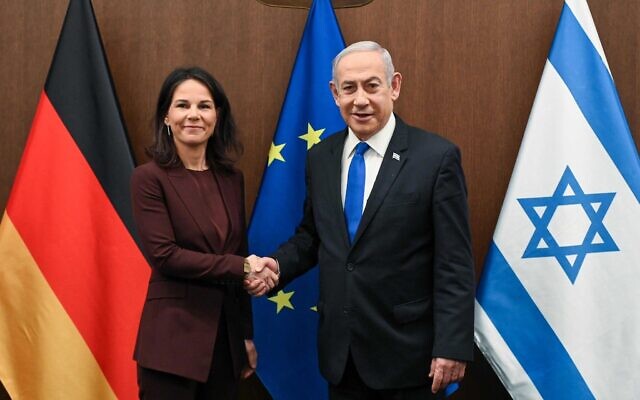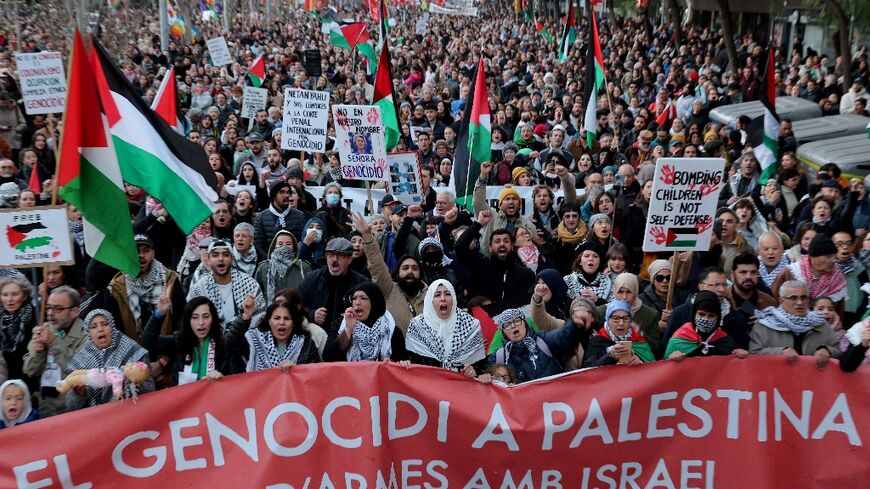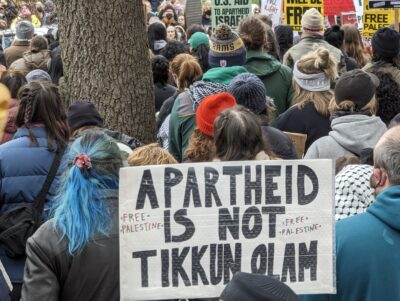 A new friend I have met through my blog, Dafna Tal, asks me to help her publicize an event she is planning for a few days from now:
A new friend I have met through my blog, Dafna Tal, asks me to help her publicize an event she is planning for a few days from now:
Bridging the Divide, will take place Friday September 15th at Laila Lounge, Williamsburg Brooklyn. It would be an opportunity to enjoy the richness and beauty of cultures, to support peace, and to meet more exciting people who believe in the same cause. A few exciting details: A Multi-Ethnic Ramadan and Rosh Hashanah Feast, art work by Israeli and Palestinian artists, Arabic and Klezmer live shows, a belly dance show and a 1500 Square Foot Dance Floor.
The event website adds:
A celebration of cultures bringing people to support peace
Look past today’s headlines of conflict to discover two ancient yet modern cultures with a rich common heritage. Bridging the Divide is a celebration of Jewish and Arab culture through art, music, dancing and food. A unique fundraising event that brings people together to celebrate these kindred cultures and peace.
On September 15, spend an evening of music, fellowship and understanding during the holy days of Ramadan and The Ten Days of Repentance.
Bridging the Divide is also a documentary project Dafna has created which will document ten stories of Israelis and Palestinians successfully briding the political, cultural and religious divide that separates them. You can also support Dafna’s worthy goals by making a contribution.






I was wondering if you had seen this unfolding situation:
Lakeland Family Separated By Rules at Airport in Israel
http://www.theledger.com/article/20070906/NEWS/709060547/1004/news
it’s gotten *no* traction in mainstream us news, except for this local paper.
I doubt the value of such events based in intellectual dishonesty.
The announcement says:
Ethnic Ashkenazim have no connection to Palestine beyond the mythological. In the late 19th century eminent Semiticists like Gustav Dalman and Wilhelm Gesenius elucidated difficult Talmudic texts by analyzing vocabulary and idioms that passed into Palestinian Arabic from Palestinian Aramaic as the Palestinian Judean, Galilean, and Idumean populations were Islamicized.
Before the Zionists ethnically cleansed the native Palestinian population, classicists and anthropologists used modern Palestinian practices to explain difficult references to Greco-Roman Palestine in classical texts.
The native Palestinian population preserved the ancient Palestinian festivals like those of Nabi Hud (Yehuda), Nabi Ruben (Reuvan), and Nabi Yamin (Binyamin), that are mentioned in classical texts but were never codified by Talmudic sages. Naturally, modern ethnic Ashkenazim descended from non-Palestinian populations that adopted a very different form of Judaism much later have no knowledge of such celebrations.
In point of fact, ethnic Ashkenazim have far more in common with Poles and other Slavs than they with other Jewish populations. The Israeli movie Late Marriage shows how tremendously different ethnic Ashkenazim are with their history of early marriage, early divorce and remarriage even from Georgian Jews, who also came from Russian-rule territories and who like Georgian non-Jews tended to have later marriages and disdain divorce.
The Polish ethnic Ashkenazi Yeshiva-system was strongly influenced by the Polish seminary and had little similarity to the educational system among other Jews. The pilpul of Polish yeshiva is for the most part an immitation of the Polish seminary practice of training via quodlibet analysis. Even co-resident Polish Tatar Jews had a completely dissimilar educational system, and among Polish Tatar Jews even idiomatic usage of religious Hebrew differed. Melammed or melammed gadol were titles that indicated high levels of scholarship. Ashkenazim called the humble heder teacher a melammed.
D: I agree this is a shande. I’ve written this post, written to several Israelis I know, & also asked the Association for Civil Rights in Israel if it can weigh in on the case.